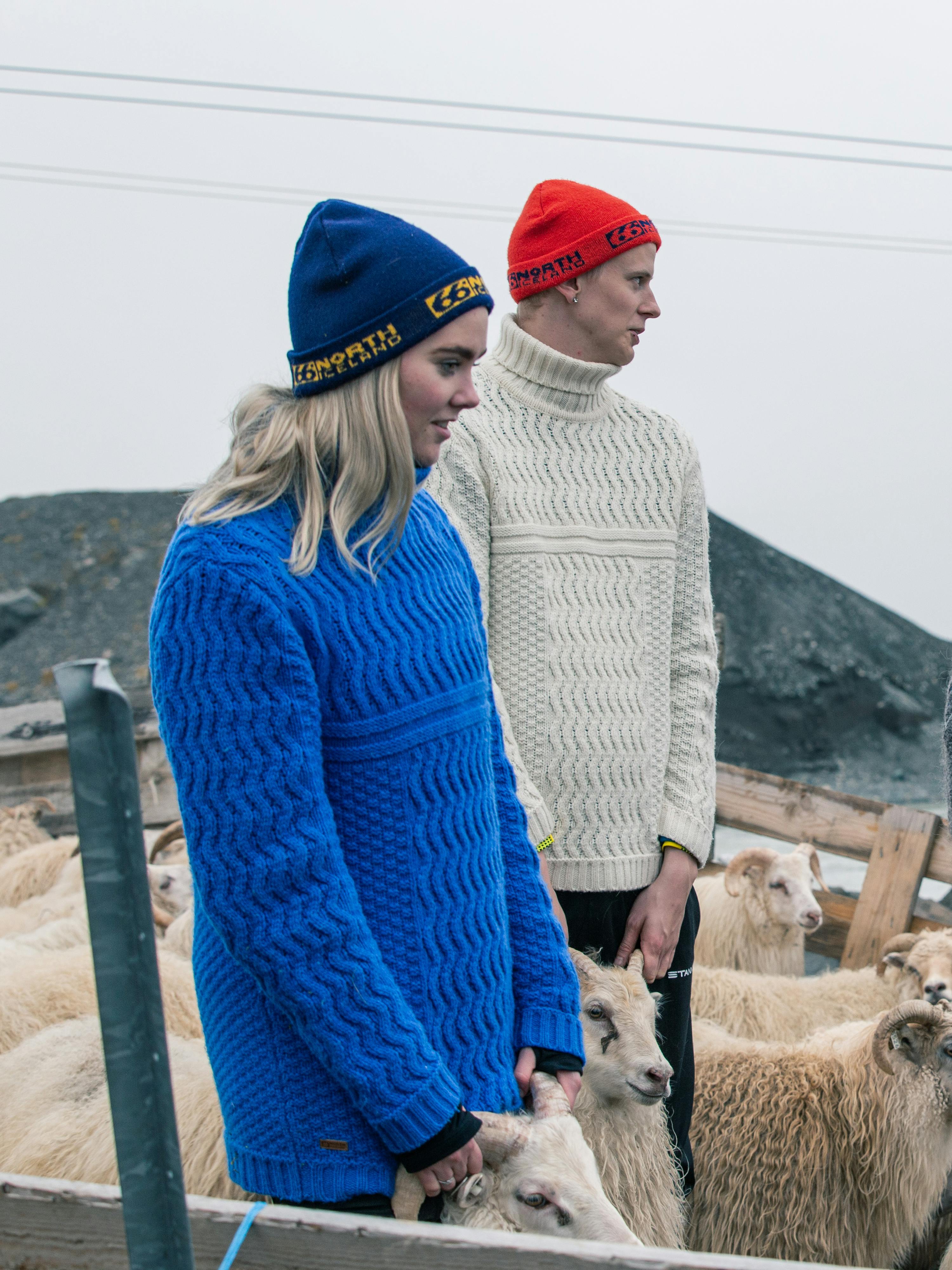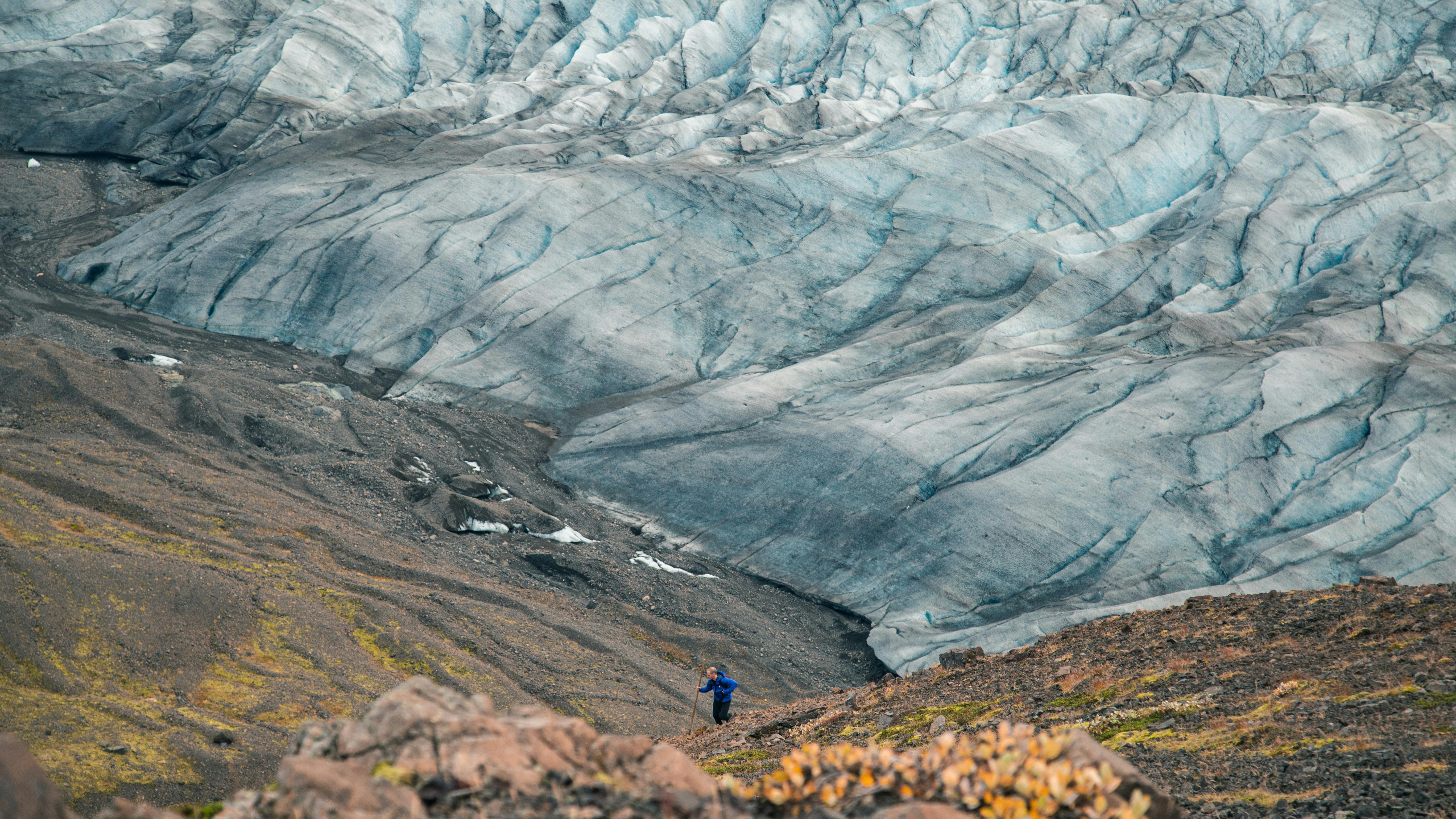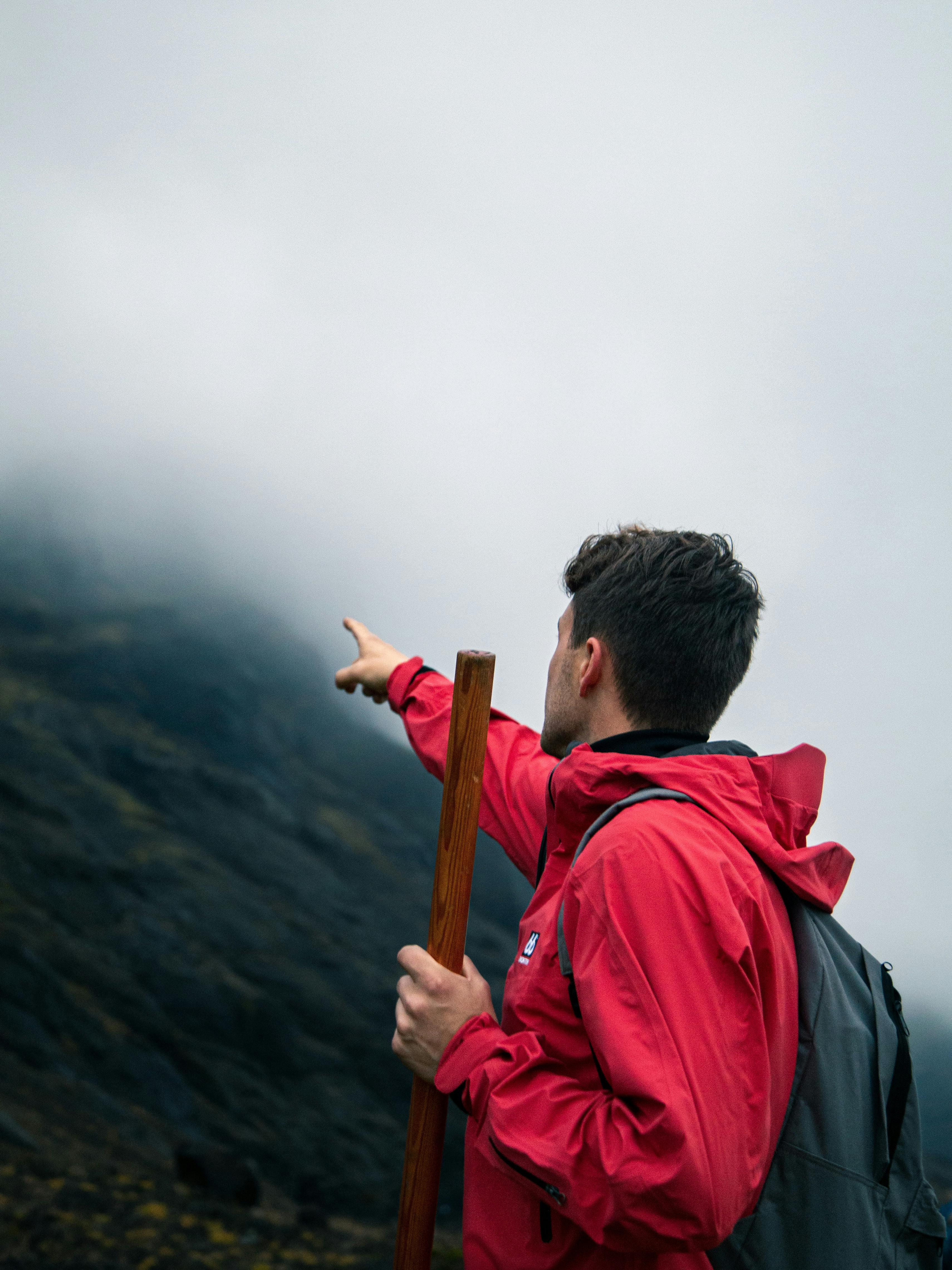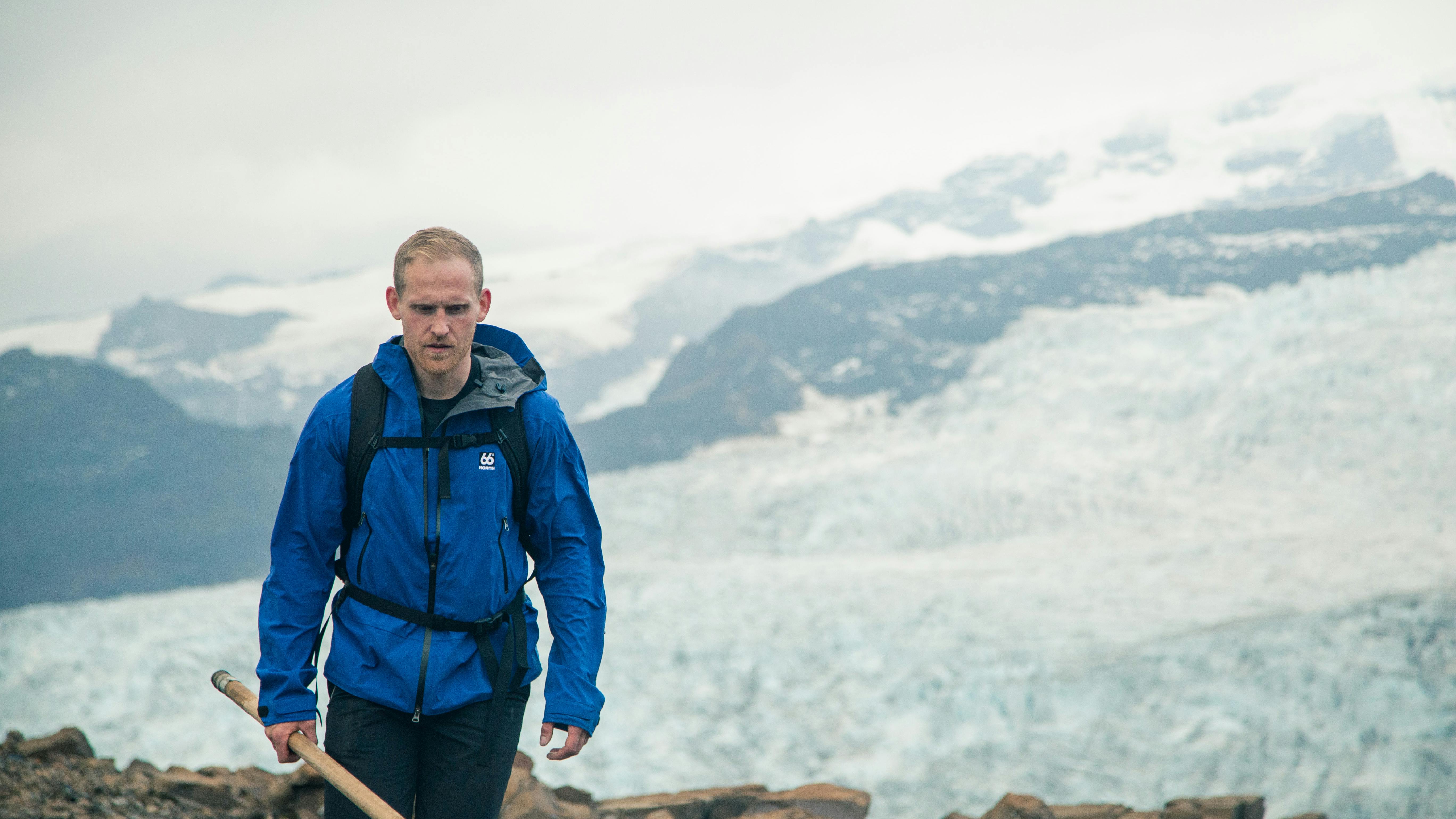
Sheep herding on Breidamerkurfjall
A farmer's legacy
Being a sheep farmer in Iceland requires a great deal of passion and dedication.




Keeping a centuries-old tradition Icelandic sheep farmers choose to keep their sheep up in the mountains during summertime where they roam free. Every year, autumn arrives with the monumental task of herding them back down.
Despite that, the farmers can't imagine doing anything else.
The general Icelandic term for herding sheep is to “smala”. It is hard to explain its real meaning in only one word. “Sheep herding/mountain hiking” would be one way to describe it. The farmers talk about it in a very laid-back manner, simply referring to it as “going out for a walk”. In fact, it is very strong in the Icelandic farmers' nature to act mellow about everything that happens around them, apart from the occasional anger towards geese eating up and tramping on the grass on their land. This walk isn't just a part of their job, it's a part of their legacy and they enjoy every second of it.
Breiðamerkurfjall has been a pasture in the last centuries, but conditions have changed rapidly over the past decades. Originally, it was surrounded by a large glacier. However, after the glacier started retreating in the 1930s the mountain now stands between two glacier outlets; Fjallsjökull and Breiðamerkurjökull. Since then, farmers have had to cross a glacier river to get to the mountain and then had to cross it again on the way back, with their sheep.
Farmers have to cross a glacier river to get to the mountain.
You may wonder how they transport a herd of sheep over the glacier river. Many years ago, a group of innovative farmers from Öræfi designed a custom “floating barge”, specially fitted to carry sheep over the river. It has been used ever since and the locals believe this to be the only place in Iceland where this is part of the herding process.
The leader of the herding group that we accompanied was Hilmar Þór Sigurjónsson, a 34-year-old farmer from Litla Hof. Despite being relatively young, Hilmar is well experienced since he has been going on this walk since he was 8 years old.
The snow took Sigurður down a cliff. The fall is believed to have been 212 meters (700 ft) as he landed on the glacier and fell into a 28 meter (92 ft) deep crevice. Páll witnessed this happen but could not locate his brother. He went to get help from nearby farms, which lead local farmers to create a rescue-team dedicated to the search. They searched without any luck until it became dark so they had to return home. They knew they might never see Sigurður again, but refused to give up hope.
The next day, they continued the search. As they were about to give up, they heard a noise coming from a crevice near them. As they approached it, they recognized the noise. It was Sigurður, singing a hymn he favored from his church. “Lofið vorn drottinn” or “Praise our Lord”, a hymn about how the lord will guide us to the right path. Against all odds, Sigurður had survived. He sang constantly while he was in the crevice because he knew he would never be found would he fall asleep. He was in the crevice, helpless for 25 long hours. Sigurður’s brother, Páll, who was much into music, later claimed that he had never heard a better song in his life than his brother’s delivery of the hymn (7th of November 1936).
But that wasn’t all that saved Sigurður’s life. Before heading to the mountain, Sigurður took some hay from his barn and brought it along. His plan was to use it to lure the sheep near him, so he kept the hay underneath his coat. Therefore, the hay covered his chest which reduced the damage as he landed on the ground.

Sheepherders carry backpacks while herding mountains, for obvious reasons. It is a long trip, and it is pretty certain that you won't be home in time for lunch, or any other meal for that matter. The food that they carry is quite unusual, but in the same time very traditional; liver pudding and smoked lamb with lots of butter on a flatbread. Other convenient snacks, such as a mix of nuts, dried fruits and chocolate raisins are kept within an arm’s reach so it can be eaten while herding and without stopping.
The herders do not bring any water along in their backpacks, at least not while going up the mountain. When packing, newcomers were advised to leave their water bottles at home since they add too much weight and sheepherders consider it to be absolutely unnecessary. Instead, one should drink what the mountain has to offer. There are a lot of brooks and rivers on the mountain where you can drink fresh, cold and clean water.
A walking stick is said to be the sheepherder’s best friend. It saves them a lot of energy on the hike and helps to maintain balance while walking the steep screes, cross rivers and break while sliding downhill. They even refer to it as ‘the third foot’. What’s even more fascinating about the sticks is that you can’t buy them in stores. They were designed and made by the local farmers many years ago - a true classic that carries out for generations.The Breiðamerkufjall mountain is quite big and has over 250 sheep roaming around on it. The sheep stay together in small groups of two to six, spread over different areas. That means, the first step in herding them is starting the search in one end and then collecting the sheep as the group combs the mountain, all the way to the other side.
What may be surprising is that the sheep are so far in front of the herders for most of the time, that they can hardly be seen. The distance is such that the sheep can only be seen as little dots - and you want to keep a fair amount of distance because that way is easier to control them.
An untrained herder would most likely not recognize these dots as sheep from that distance. But for a well-trained and experienced farmer’s eye, it is very basic. They always seem to be aware of sheep, no matter how far away they are. Also, this is where experience really matters. A good farmer knows his sheep better than he knows himself. They know where they like to hang-out on the mountain and therefore know where to look.
Understanding the seasons and the weather that comes with each one is an important task to the farmers. If they want to maintain their way of living, they must be sure to have their sheep home before winter.
Therefore, the key to success is picking the right day. The journey itself is difficult enough but adding bad weather into the equation makes it impossible. This is where the Icelandic weather creates a problem since autumns in Iceland can be quite unpredictable.
It is impressive how well the farmers know their land. Not only do they seem to know every rock and feather laying on their land - but also the weather. We had been following the forecast for days and as the weekend approached, it seemed like the herding had to be postponed. The farmers, however, were skeptical of the official forecast and decided to keep the date unchanged. Luckily, their instincts turned out to be right.
The weather was calm and the conditions for herding very good. It had rained in the days before, so the flora looked fresh, recently nourished and extra colorful. The skies had a beautiful moody mist floating between the mountaintops which set a dramatic mood. We couldn’t have picked a better day.
Although it was a good choice to herd on that day, it did create a few problems. Herding on a mountain is in general dangerous if you are not careful. The mountain is steep, and if you fall, you may not be able to stop. It was humid and foggy that day which makes the rocks slippery. By the end of the journey, the mist had increased a lot, making it even more dangerous and increasing the likeliness of getting lost. But these are inevitable dangers that farmers and sheep herders are well aware of before going on the mountain.
Knowing that, it may seem that keeping their sheep in these mountains is absolutely necessary for the farmers. But the surprising fact is that it isn’t. They choose to do so to preserve their legacy and continue the traditions that have followed them for generations. It does not even cross their mind to stop. Even though it's a dangerous and difficult task, physically and mentally, they look forward to it every year.
10 hours later, after combing the area back and forth, the group was finally able to bring the sheep safely down to the "rétt". A rétt is where the flock of sheep is kept while the farmers sort out who owns which one. Then, they transfer their collection of sheep on the floating barge over the glacier river. There, the farmer greets his sheep after being separated for the whole summer with a big smile on his face. The sheep are brought to his trailer and he delivers them home safely.
After the sheep have been gathered, and the categorizing begins the atmosphere is light, kind and instantly has become a lot less stressful. It is no coincidence that a lot of people volunteer to take part in the annual herding. It’s hard work, but very rewarding. Newcomers and experienced farmers work ambitiously together and the strength of every individual is utilized.
Being outside in the fresh Icelandic mountain air is among the best forms of meditation you can do. The farmer's walk is just one of the many in Iceland. There is nothing quite like experiencing it yourself.
A special thank you to the farmers of Öræfi who were kind enough to allow the documentation of the whole process.
What to wear
Featured gear










